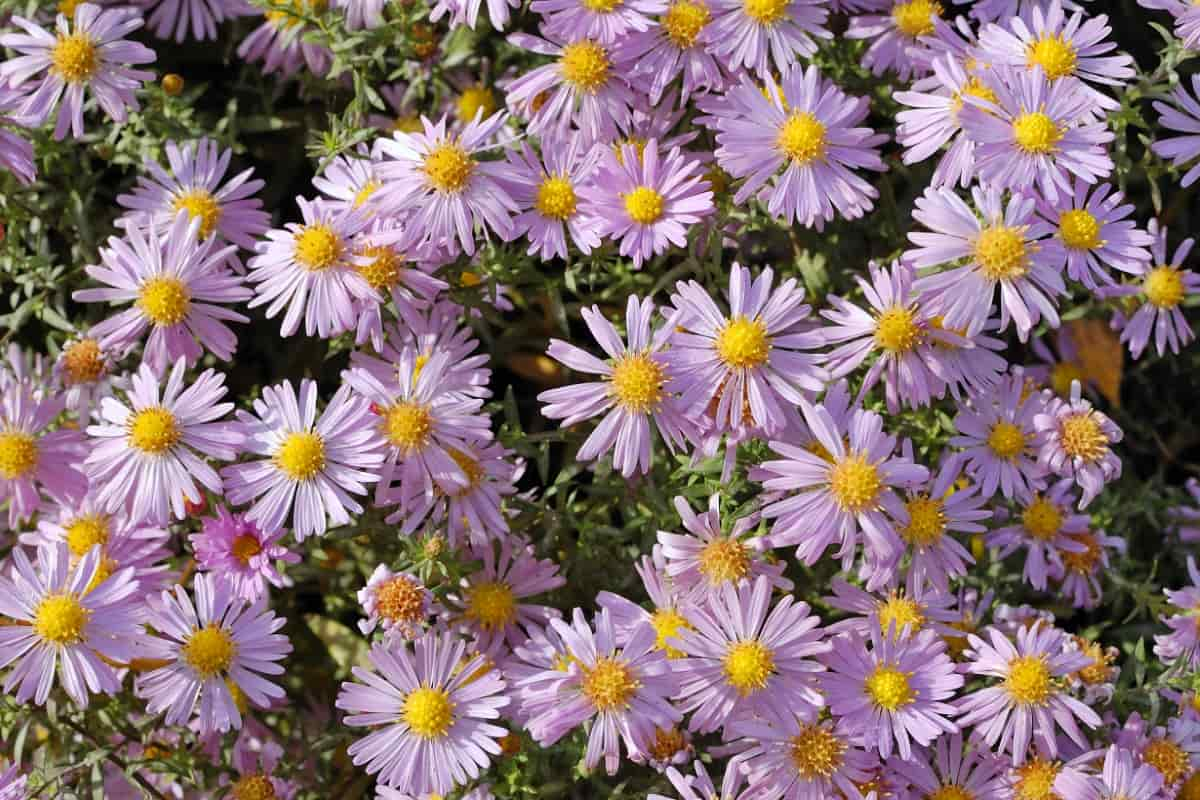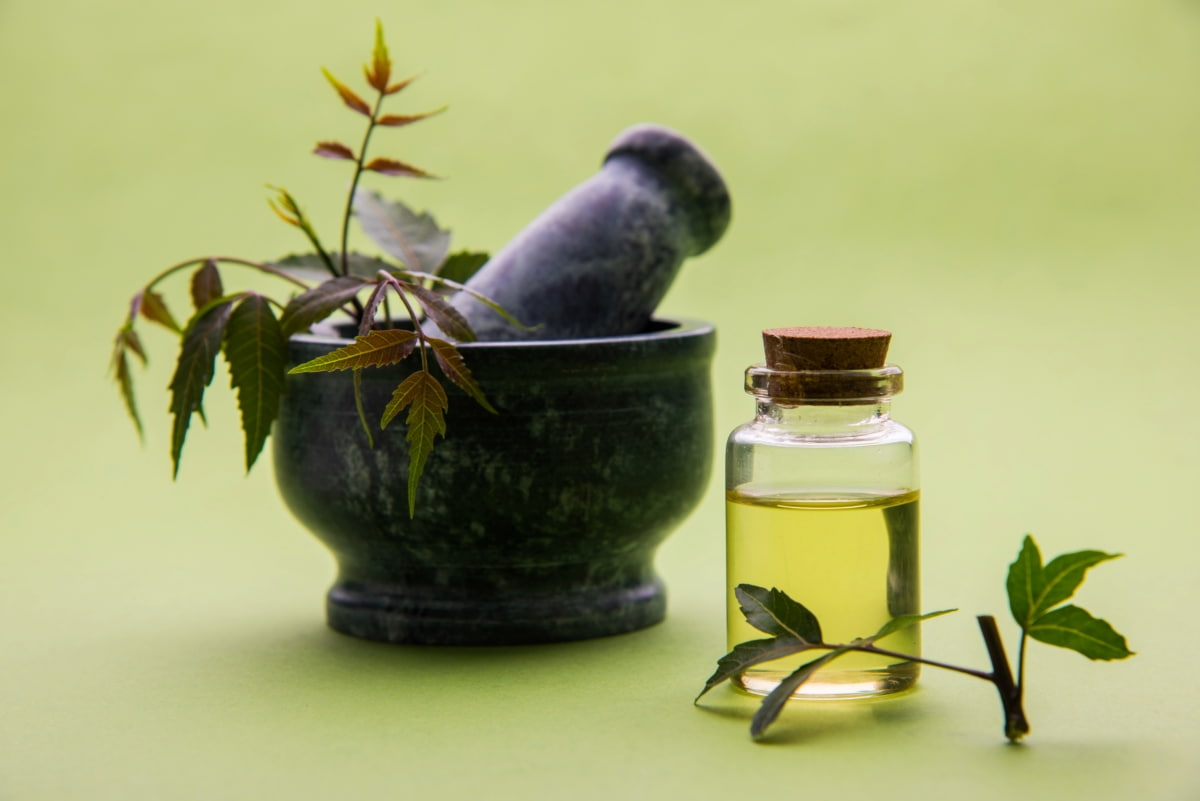Neem oil is a natural, effective solution for managing pests and diseases in aster plants. This article explores how to correctly use and apply neem oil, ensuring the health and vitality of your asters without harming the environment.

How to Use Neem Oil on Aster Plants
Neem Oil and its Benefits for Aster Plants
When considering how to use neem oil on plants, particularly asters, it’s essential to recognize its broad-spectrum action against common pests like aphids, mites, and whiteflies. What makes neem oil particularly appealing is its safety profile – it is safe for humans and beneficial insects, minimizing the ecological impact often associated with chemical pesticides.
Using neem oil on plants indoors or in gardens can also help manage fungal diseases, which commonly afflict asters. While discussing how to use neem oil on plants, it’s important to understand how to mix neem oil for plants correctly to achieve the desired effect without causing harm to the plants themselves.
How to Prepare Neem Oil to Use on Aster Plants
Preparing neem oil for use on aster plants involves a few simple steps to ensure its effectiveness. Firstly, understanding the neem oil dosage per liter is crucial; typically, a ratio of about 2 to 5 ml of neem oil per liter of water is recommended. Begin by blending neem oil with a small quantity of gentle liquid soap or detergent. This serves as an emulsifying agent, enabling effective mixing of the oil with water.
Once the neem oil and soap are blended, add this mixture to water, stirring it thoroughly to ensure a consistent solution. When learning how to mix neem oil for plants, it’s essential to prepare the mixture fresh each time you plan to apply it, as the effectiveness of neem oil can diminish if left sitting in water for too long.
How to Apply Neem Oil on Aster Plants
When considering whether to spray neem oil on soil or leaves, the answer depends on the type of pest or problem you’re addressing. For pests like aphids and mites that reside on the leaves, a foliar spray is most effective. In contrast, soil application is more suitable for dealing with soil-borne pests and diseases.
In case you missed it: How to Use Neem Oil on African Violets: A Natural Way to Get Rid of Bugs from African Violets

To administer neem oil to the soil, just pour the diluted mixture at the plant’s base, enabling it to penetrate the root area. When using neem oil on plants indoors, ensure good ventilation and avoid oversaturating the plant to prevent fungal growth due to excess moisture. The key is to spray or douse the plant evenly, covering all surfaces, including the undersides of leaves where pests often hide.
Mixing and Dilution for the Right Concentration of Neem Oil for Aster Plants
Achieving the right concentration of neem oil for aster plants is pivotal for its effectiveness and safety. The general guideline for neem oil dosage per liter is to mix 2 to 5 ml of neem oil per liter of water. The appropriate concentration for pest treatment depends on the pest severity and plant sensitivity. It’s important to begin with a lower concentration, especially for delicate plants, to assess their response to the treatment. Over-concentration can lead to leaf burn or other adverse effects. Always perform a patch test on a small area before fully treating the plant.
Can Neem Oil Be Used on All Aster Plant Varieties?
Some aster species or particular hybrids might be more sensitive to oil-based treatments. Therefore, before applying neem oil extensively, it’s advisable to test it on a small section of the plant and observe any adverse reactions for 24-48 hours. If the plant exhibits symptoms of stress, like wilting, color changes, or leaf damage, it is advisable to avoid applying neem oil to that specific type of plant.
How Long Does Neem Oil Stay Effective on Aster Plants?
Neem oil’s effectiveness on aster plants can last for about a week to ten days under ideal conditions. This duration is influenced by factors such as weather conditions, rainfall, and the severity of the pest infestation. In dry and mild conditions, neem oil tends to remain effective longer, as it is not washed off by rain or degraded quickly by high temperatures. Regular monitoring of the plants after application is important to determine if additional treatments are necessary. Keep in mind that neem oil works gradually, affecting the pests over several days, so immediate results may not be visible.
Using Neem Oil in Combination with Other Pest Control Methods
Combining neem oil with various pest control techniques can augment the overall efficiency of your pest management approach for aster plants. Neem oil, though powerful, may not consistently provide complete protection, particularly in severe infestation scenarios. Integrating it with other natural strategies, like introducing beneficial insects that prey on pests, can produce superior outcomes.
In case you missed it: How to Use Neem Oil on Hyacinth Plants: A Natural Way to Get Rid of Bugs from Hyacinth Plants

Additionally, maintaining healthy soil and providing adequate nutrition and water to your plants can make them less susceptible to pest attacks. When combining neem oil with other methods, ensure that they are compatible and do not counteract each other’s effects.
Some Common Pests and Diseases that Neem Oil Can Control on Aster Plants
Neem oil is highly effective against a range of pests and diseases that commonly affect aster plants. Among the various pests, aphids, spider mites, and whiteflies are prevalent invaders of aster plants, resulting in harm through sap extraction from leaves and stems. Neem oil is effective in combating these pests by disrupting their life cycles and impeding their ability to feed efficiently.
It’s also effective against caterpillars and some beetles, which chew on the leaves. In terms of diseases, neem oil can help manage fungal infections like powdery mildew and rust, which often plague aster plants. These fungal diseases create unsightly spots and can weaken the plant over time. By applying neem oil, you can reduce the incidence of these diseases, as it acts as both a preventative and a treatment.
How to Monitor the Effectiveness of Neem Oil on Aster Plants
Monitoring the effectiveness of neem oil on aster plants involves regular observation and assessment of the plant’s health and pest levels. After applying neem oil, check the plants every few days to note any changes in the infestation or disease symptoms. Look for signs of reduced pest activity, such as fewer aphids or mites on the leaves or a decrease in new damage like holes or discoloration.
It’s also crucial to observe the plant itself for any adverse reactions to neem oil, such as leaf burn or wilting. Keeping a record of when you apply neem oil and the conditions (like weather and plant health) can help you understand its effectiveness over time.
Safety Precautions to Take when Using Neem Oil on Aster Plants
Although neem oil is generally safe for humans and beneficial insects, it is important to exercise caution when applying it to aster plants. For those with sensitive skin, it is advisable to don protective clothing, like gloves and long-sleeved garments, to reduce the chance of skin irritation.
In case you missed it: How to Use Neem Oil on Pansy Plants: Best Natural Way to Get Rid of Pests on Pansy Plants

When spraying neem oil, particularly indoors or in calm weather conditions, wear a mask or respirator to prevent inhalation of the spray, which can cause respiratory irritation. Be cautious not to overspray, as excessive neem oil can harm the plant or the surrounding soil ecology. It’s also important to keep neem oil away from water sources and wildlife, as it can be harmful to aquatic life. Always store neem oil and its mixtures out of reach of children and pets.
Conclusion
Neem oil stands as a versatile and environmentally friendly option for combating common pests and diseases in aster plants. By following the guidelines outlined, gardeners can maintain healthy asters while embracing sustainable and effective gardening practices.
- Feed Your Flock for Less: Top 10 Tips to Save on Chicken Feed
- Ultimate Guide to Ossabaw Island Hog: Breeding, Raising, Diet, and Care
- Hatching Answers: The Top 10 Reasons Your Chickens Aren’t Laying Eggs
- Eggs and Economics: Breaking Down the Cost of Raising Backyard Chickens
- Defend Your Greens: Proven Methods to Keep Iguanas Out of Your Garden
- Ultimate Guide to Cinnamon Queen Chicken: A Comprehensive Guide for Beginners
- Ultimate Guide to California Tan Chicken: Breeding, Raising, Diet, Egg-Production and Care
- Ultimate Guide to Marsh Daisy Chicken: Breeding, Raising, Diet, and Care
- 10 Types of Chicken Farming Businesses You Can Start for Profits